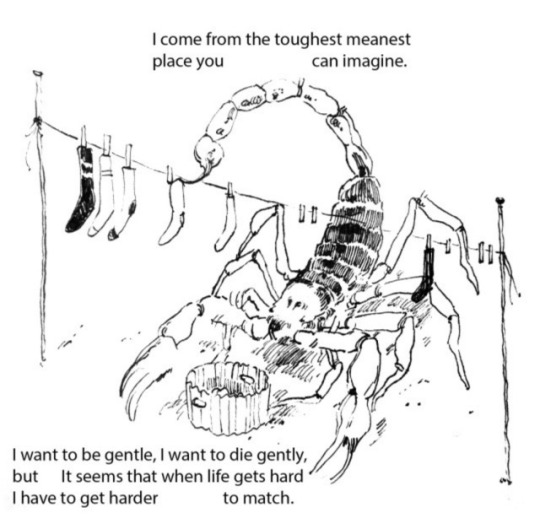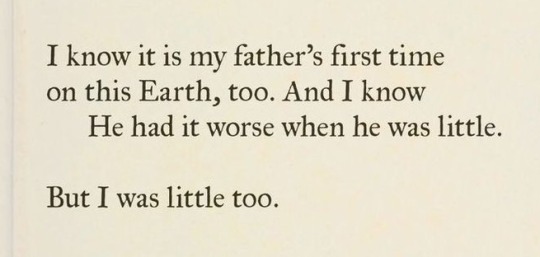#i've just been thinking a lot about how maggie said draft one of raven boys adam was supposed to become a villain
Explore tagged Tumblr posts
Text













adam parrish + the potential for villainy
maggie stiefvater, the dream thieves⎮interview with bugs by @nutnoce⎮unknown source⎮maggie stiefvater, the raven boys⎮@veniennes on tiktok⎮maggie stiefvater, call down the hawk⎮warsan shire, souvenir⎮unknown source⎮art by @gender0bender⎮maggie stiefvater, blue lily, lily blue⎮clarice lispector, the hour of the star⎮art by @heavensghost⎮maggie stiefvater, call down the hawk
#who had me returning to raven cycle posting on their 2024 bingo card#web weaving#parallels#adam parrish#trc#the raven cycle#ronan lynch#pynch#also want to clarify that i am not judging mr adam parrish he is so beloved to me#i've just been thinking a lot about how maggie said draft one of raven boys adam was supposed to become a villain#and how easy that would have been#n e ways#sorry there are unsourced things i'm trying my best#the dream thieves#blue lily lily blue#bllb#call down the hawk#cdth#the dreamer trilogy#sofia posts
665 notes
·
View notes
Note
Hi! Theres this story I've started, But the beginning is horribly awkward, and I'm sure the ending might be aswell, so I was wondering if you could give some advice on how to write the beginning/ending?
Writing Great Beginnings and Endings
One of the absolute best tips I can give you for writing great beginnings and endings is to not worry about it when you’re writing your first draft. Why? Because no matter how well you’ve plotted out your story, it’s absolutely going to evolve as you write it. Things will get added, taken out, and changed. What you end up with will likely be quite different from what you started out thinking you were writing. In other words, no matter what the beginning is in your first draft, there’s a good chance you’re going to want to change it later anyway. So, just go with that horribly awkward beginning until you’ve written at least the first draft of your story and have a better idea of what it’s going to be. (And same goes for the ending, too.)
When you’ve got a completed first draft, you can start working on a better beginning. Here are some tips:
Choosing a Beginning
The beginning of your story should accomplish four things:
1. Provide a snapshot of your character’s normal life, prior to whatever changes will be brought on by the inciting incident.
2. Establish the setting, or at least the parts that will be important to know before the inciting incident.
3. Introduce any supporting characters that are important from the beginning on through the story.
4. Illustrate your character’s flaws and things about their life that should probably change, along with your character’s internal problem and goal.
So, one way to figure out when to start the story is to look at your inciting incident and rewind a few hours or days. Look at what your character is doing in their normal life. Can you find anything about their “status quo” life that might be interesting in some way? Suzanne Collins chose to start The Hunger Games with Katniss doing some illegal hunting with Gale. Maggie Stiefvater chose to begin The Raven Boys with Blue sitting in a frozen churchyard watching ghosts with her mother’s half-sister, Neeve. Jane Austen began Pride and Prejudice with Mrs. Bennet regaling her husband with the news that the nearby manor house has been let by a rich man--and though, in this case, we don’t see our hero, Lizzie, in this scene, we can observe a lot about her just from what we learn about her parents. Also, her father has some high praise for Lizzie compared with his other daughters, and that tells us even more.
While it’s fine to begin with a little bit of exposition (many stories do), you want to make sure you move into some action fairly soon, ideally after no more than a few paragraphs or a page at most. And remember, “action” doesn’t have to mean a big car chase or epic fight scene. “Action” just means that something is happening rather than something is being told.
Choosing an Ending
The ending of your story should accomplish these three things:
1. Provide a snapshot of your character’s life after all the changes brought on by the events that unfolded because of the inciting incident.
2. Let us know where the supporting characters ended up, if that’s not already apparent.
3. Illustrate how your character has changed, or how they’ve helped someone else change or changed their environment.
Remember, stories are ultimately journeys of transformation. Usually it is the protagonist themselves who change, either for better or worse, but sometimes the protagonist stays the same (static) and instead helps someone else change or brings about change in a place or situation. By the time you’ve gotten to the end of your first draft, you should have a pretty good idea of what changed, which will help you figure out the best way to end your story. One of the best ways to illustrate that change is to make your ending mirror the beginning in some way. It doesn’t have to be a literal mirror image, but just as the opening showed your character’s life just before the transformative journey begins, the ending shows your character’s life afterward. For example, in the movie Under the Tuscan Sun, the story begins with the protagonist happily married, surrounded by friends, and living a successful life. The inciting incident changes this and unleashes a transformative journey which finds her buying and restoring a rundown house in Italy. Part of her transformation is learning that she can still have all the things she had before--love, family, and joy--but that those things can come into your life in unexpected ways and don’t necessarily require romantic love. So, in the end, we see her happy in her finally renovated new home, surrounded by friends and people she loves, relaxed and full of joy. And, as a bonus, we get a little nod to the fact that romantic love may be in the cards for her after all. So, like I said, don’t sweat the beginning and end until you have a completed first draft. Let the beginning and end be awkward and awful. Then, once you know what your story truly is, you can start looking at the advice up above and you’ll be more easily able to apply it to your story. Good luck! :)
135 notes
·
View notes